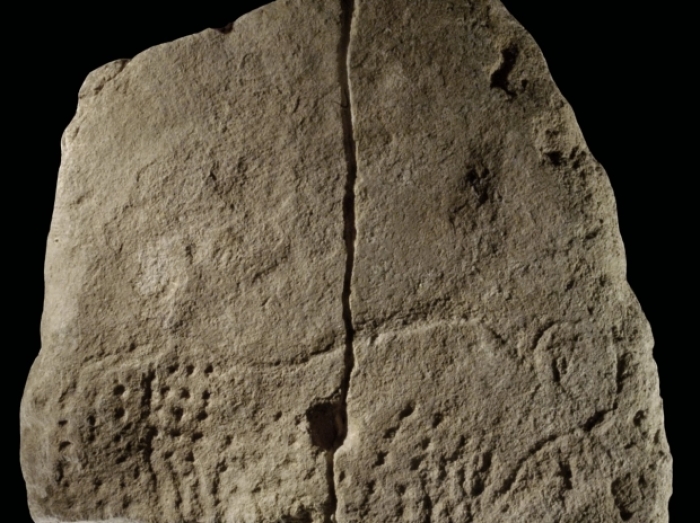New 38,000-Year-Old Cave Engraving Sheds Light on Early Human Life
The earliest modern humans are believed to have arrived in Europe from the Middle East and West Asia around 45,000 years ago. And despite still using stone tools to hunt, humans of this period are credited with creating some of the earliest art work recorded in the history of civilization.

An international team of anthropologists recently uncovered a 38,000-year-old engraved image in a cave located in France's Vezere Valley. The find – a limestone slab bearing a complex image of an aurochs (an extinct wild cow) surrounded by a row of dots – is one of the earliest known artifacts of graphic imagery found in Europe.
The discovery, which was published this week in the journal Quaternary International, offers new insights into human culture during the Aurignacian period, which existed from about 43,000 to 33,000 years ago.
"The discovery sheds new light on regional patterning of art and ornamentation across Europe at a time when the first modern humans to enter Europe dispersed westward and northward across the continent," explains Randall White, an anthropologist at the New York University who led the excavation.
The slab was found at Abri Blanchard – a site in southwestern France which, along with its sister site Abri Castanet, has previously yielded hundreds of significant finds such as pierced animal teeth, pierced shells, ivory and soapstone beads, engravings, and paintings on limestone slabs.
White and his team began a comprehensive exploration of the site, which has been recognized as one of the oldest Eurasian sites containing artifacts bearing human symbolism, in 2011 and found the slab with the aurochs image in 2012.
The discovery of the Aurignacian art offers anthropologists deeper understanding of the earliest modern humans to inhabit Europe – from their individual lives to the societies which existed in that era.
"Following their arrival from Africa, groups of modern humans settled into western and Central Europe, showing a broad commonality in graphic expression against which more regionalized characteristics stand out," White said in a statement. "This pattern fits well with social geography models that see art and personal ornamentation as markers of social identity at regional, group, and individual levels."





























